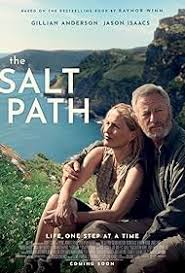The Salt Path Film: An Inspiring Journey

Introduction
The film adaptation of ‘The Salt Path’, based on the bestselling memoir by Raynor Winn, has recently gained attention for its poignant storytelling and powerful themes of resilience and hope. The narrative follows Raynor and her husband, Moth, as they embark on a transformative journey along the South West Coast Path in England after facing devastating life changes, including a terminal illness diagnosis and homelessness. This story of survival, love, and nature is not only essential for its emotional depth but also highlights the importance of mental health and the healing power of the outdoors.
The Story Behind the Film
First published in 2018, ‘The Salt Path’ has resonated with many readers, providing a raw and unfiltered glimpse into the struggles of a couple forced to redefine their lives amid adversity. The film, which premiered earlier this year, captures these emotional highs and lows with grace and authenticity. Critics have praised the performances of the lead actors, drawing viewers into the narrative that intertwines themes of grief, resilience, and the undeniable bond between partners who confront life’s challenges together.
As the couple trekked over 630 miles, the film artfully depicts not only the physical journey but the emotional voyage they undergo. The rugged, stunning landscapes of the South West Coast Path are beautifully captured, adding depth to the cinematic experience while also serving as a backdrop for the couple’s internal struggles and personal growth.
Public Reception and Impact
Since its release, ‘The Salt Path’ film has sparked conversations about mental health, the importance of resilience in the face of overwhelming challenges, and the therapeutic benefits of engaging with nature. Viewers have reported feeling inspired and uplifted by the film’s narrative, leading to increased discussions surrounding the need for social support and understanding for those facing similar adversities.
Additionally, the film has encouraged many to explore their own local paths and the benefits of walking as a method of coping and self-reflection. Enthusiasts of the outdoors and mental well-being have taken to social media to share their personal experiences and how the film has motivated them to seek healing through nature.
Conclusion
The importance of ‘The Salt Path’ film goes beyond its cinematic achievements; it serves as a reminder of the resilience found in the human spirit and the profound connection between nature and healing. As more viewers engage with this inspiring story, it is hoped that it will further spark interest in outdoor activities as a form of therapy and bring awareness to the stigma surrounding mental health issues. As we look ahead, the impact of ‘The Salt Path’ is likely to encourage more discussions about mental health and inspire subsequent generations to seek solace and strength in nature.









